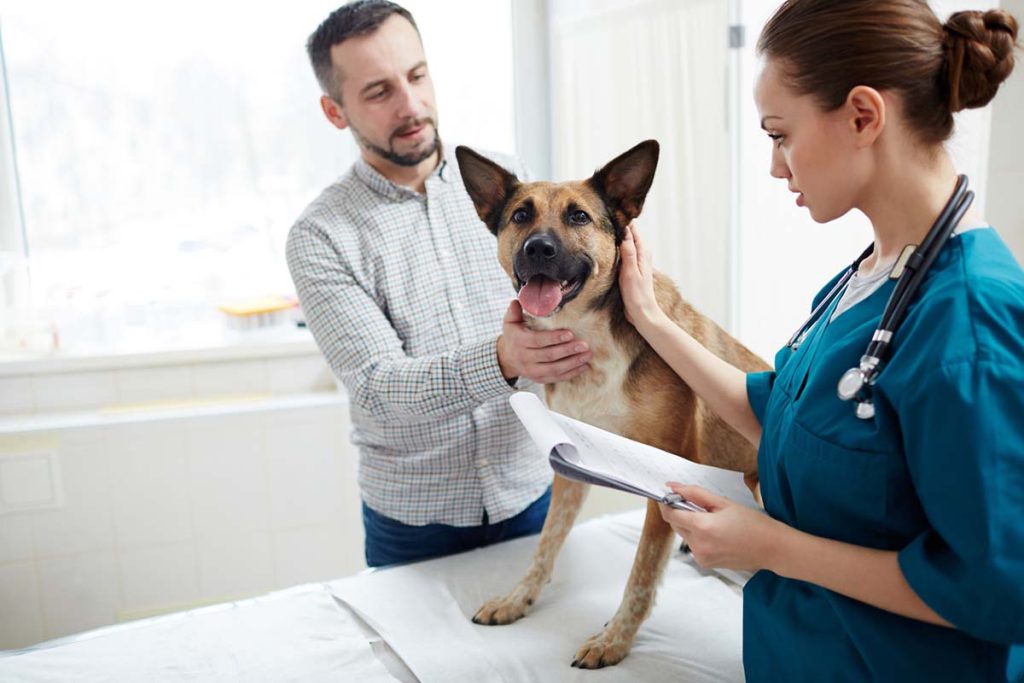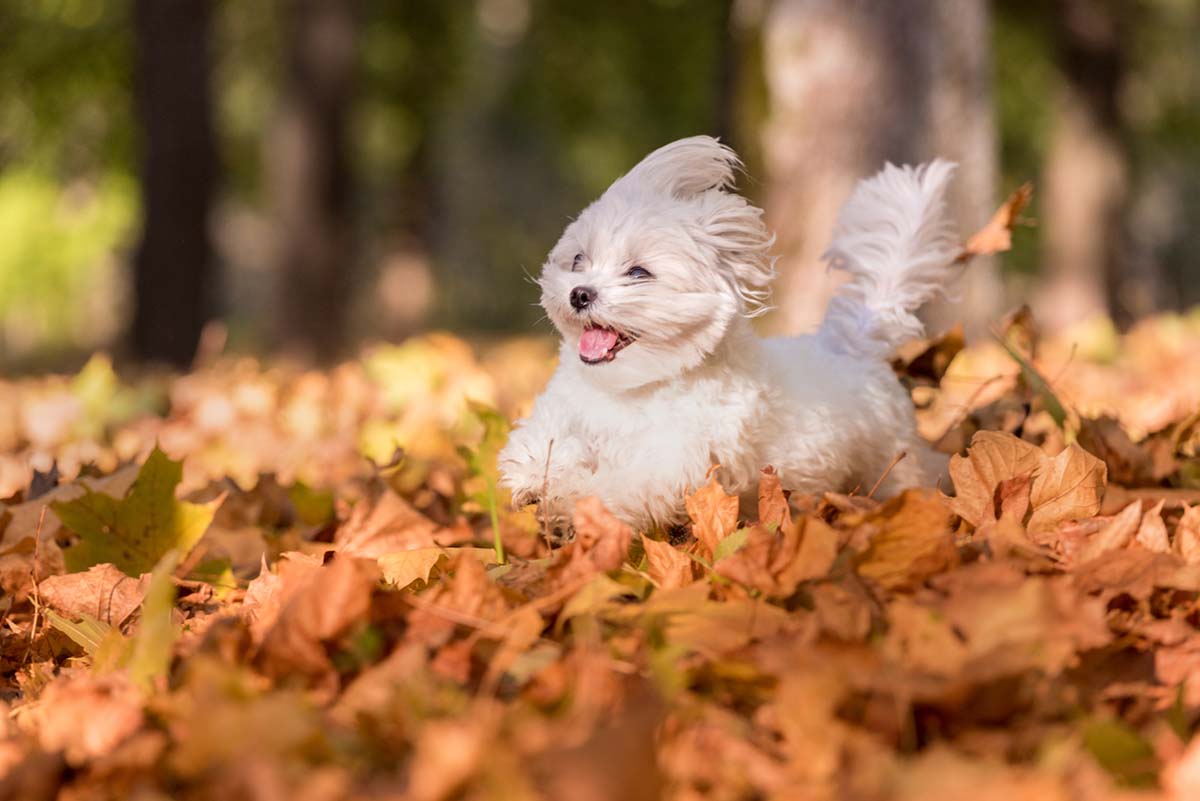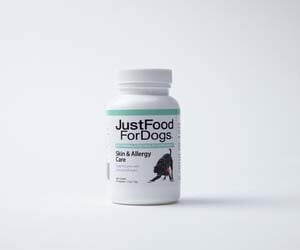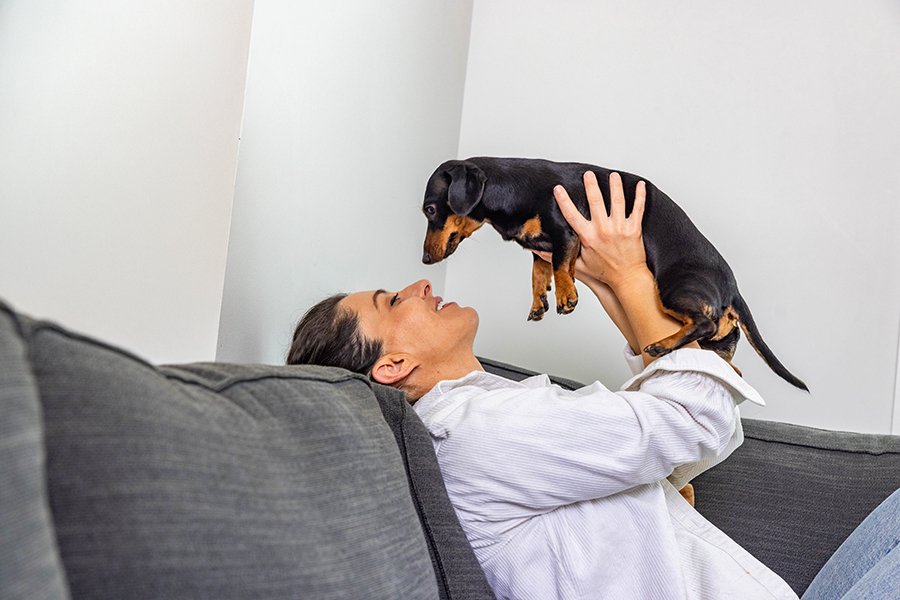How to Manage Fall Allergies in Dogs
Itchy skin, watery eyes, and sniffles can affect your pup. Yep, fall allergies in dogs are a thing, and they’re triggered by the same environmental factors that affect humans.
Itchy skin, watery eyes, and sniffles can affect your pup. Yep, fall allergies in dogs are a thing, and they’re triggered by the same environmental factors that affect humans.
Pollen, mold, dust mites, and certain types of grass, among other factors contribute to fall allergy symptoms. These environmental allergens can make your dog miserable. So what’s a pet parent to do?
How do you know if your pup suffers from seasonal allergies, and if so, what can you do? How can you help your beloved pooch find relief from fall allergies?
Causes of Seasonal Allergies in Dogs
Allergies are a strange thing. They’re actually a hypersensitive immune response to otherwise neutral things. You know how you might feel watery eyes or sniffles thanks to pollen or certain foods? It’s your body misunderstanding cues, and it’s the same for your dog.
An allergic reaction starts in your immune system. Your immune system’s job is to fight the bad guys or germs and keep you healthy. But sometimes, immune systems get mixed up and mistake neutral things like pollen or a plant as a “bad guy.” Then, your immune system mounts a defense to fight these “germs,” and as a result, you can feel tired and worn out because your body is fighting for you. Unfortunately, it doesn’t realize these things aren’t a threat.
It’s the same for your dog. Certain times of year, like Fall and Spring, are especially prone to environmental allergies.
Typical seasonal allergy triggers in dogs include:
- Pollen found in plants like sagebrush, goldenrod, and ragweed can cause allergic reactions.
- Mold is a friend to no one, pups included. Mildew, black mold, all of it can trigger an allergic reaction.
- Flea bites. Some dogs have a flea allergy. They can also be allergic to ticks or even mosquito bites. Since fleas and other biting insects are usually prevalent in warmer months, you can consider them a seasonal allergy.
Of course, dog fall allergies can be hard to pinpoint because there are many potential culprits. As a pet parent, it’s helpful to make a note of when and if your dog shows these common symptoms. Add a note on your dog’s behavior to your calendar or phone’s notes function with the date, which’ll help you spot patterns.
Symptoms of Seasonal Allergies in Dogs

Seasonal allergy symptoms can take multiple paths. Some pet allergies appear as skin problems, others are gastrointestinal, while still others are watery eyes, sneezing, and lethargy.
Here are some typical pet allergy symptoms:
1. Itchy skin
Also known as atopic dermatitis, you’ll notice your dog scratching constantly. This often leads to hair loss and sometimes licking and chewing on an area, causing a hot spot. If your dog seems especially itchy in the fall, it could be seasonal allergies. If it’s a year-round problem, then it’s probably related to something else.
2. Frequent ear infections
Itchy ears, redness, and a terrible odor coming from your pup’s ears are typical signs of an allergy.
3. Watery eyes and sneezing
Got an unusually sneezy pup during allergy season? It could be related. Pay attention to other potential signs of allergy and note if anything else has changed in your pet’s health.
4. Coughing
Coughing dogs can be a sign of allergies if it’s frequent. This is especially true if your dog also wheezes a lot or has other breathing problems.
5. Paw licking
Ever seen a dog chew and gnaw on its paw like it’s got a terrible itch there? That’s one classic dog allergy symptom. Note if your dog is showing other potential symptoms and distract your pup as much as possible to keep them from chewing so much.
While these aren’t always linked to seasonal allergies, they can be if they primarily happen at certain times of the year. Otherwise, your dog could be allergic to their food.
How to Diagnose Dog Allergies

In a word, patience. You’ll want to track your dog’s behavior as much as possible to share with your veterinarian.
Your DVM will ask questions about your dog’s symptoms, their duration, and any dietary or environmental changes. The more details you can provide, the more you’ll help your veterinarian flesh out the complete picture.
- Physical exam: Your veterinarian will examine your dog. They can check for skin infections and other symptoms.
- Allergy testing: They may recommend allergy testing like skin or blood tests to identify specific allergens.
- Elimination diet: If your veterinarian suspects food allergies, they may recommend an elimination diet for a few days. When you strip your dog’s diet to the essentials, it removes any possible allergen culprits, settles your pup’s tummy, and stops the allergy symptoms.
Diagnosing dog allergies can be tricky. It takes close work with your veterinarian and keeping notes on changes in your dog’s behavior when you change food or the temperature changes. It’s always a good idea to note changes in your pet’s behavior because they can be a signal of pet health changes.
Dog Allergy Management and Treatment
You can manage seasonal allergies in dogs with a combination of preventive measures, lifestyle adjustments, and medical treatment. Once you know (or suspect) it’s seasonal allergies, you can implement the following approaches:
- Allergen Avoidance: Minimize your dog’s seasonal allergies by keeping them indoors during high pollen seasons. Instead of encouraging your pup to romp in the backyard for hours, limit it to a few minutes. Inside, you’ll want to vacuum and clean frequently. Air purifiers can help, too.
- Bathing: Use an anti-bacterial, anti-fungal, or hypoallergenic shampoo on your dog to help remove pollen and other allergens from their coat. This can reduce itchiness and prevent bacterial infections.
- Use medication: If your veterinarian prescribes over-the-counter antihistamines or corticosteroids, follow the instructions and see your dog improve.
- Omega 3 fatty acids: These essential nutrients are great for your dog’s skin and coat. They’re also beneficial for the eyes, brain, and joints. You can find Omega 3s in salmon and other fatty fish as well as flaxseeds and other foods.
- Diet: Eating a “clean” diet will benefit your pup inside and out. Healthy nutrition can improve your pet’s health at every level, including boosting the immune system, which may reduce fall allergy symptoms.
- Immunotherapy builds up your pet’s tolerance so they don’t react to specific allergens. Also known as allergy shots, the process works by administering small amounts of the allergens over time and gradually increasing the amounts. In this way, the immune system recognizes the allergens as harmless.
- Allergy supplements: Allergy supplements for dogs are designed to help your furry friend manage uncomfortable skin issues related to seasonal allergies.
In summary, allergies can cause your dog discomfort and distress during the fall season. The root of seasonal allergies is an overactive immune response. By identifying the potential allergens, getting your dog to the veterinarian and cleaning up your dog’s diet, you can instigate effective allergy management techniques and hopefully, mitigate or eliminate them over time.
This content is for informational use only and does not replace professional nutrition and/or medical advice, diagnosis, or treatment. It is not a substitute for and should not be relied upon for specific nutrition and/or medical recommendations. Please talk with your veterinarian about any questions or concerns.








